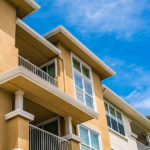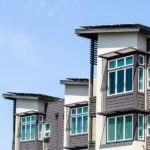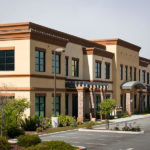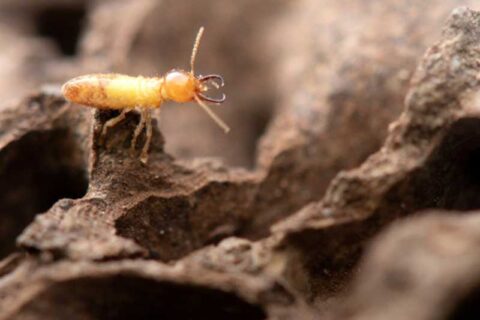Choosing Wood Carefully to Prevent Termite Infestation
Finding termites in the home is a serious issue—and not just because the thought of them scurrying around the premises makes people squeamish. These little insects can easily inflict massive damage to your house, and, in many cases, they leave few or no apparent traces of their destruction until irreversible harm has been done. This is where termite control services are necessary.
They generally eat wood from the inside, progressively hollowing out the center while leaving the surface apparently untouched. This habit can make termite infestations very difficult to detect for anyone who isn’t a trained professional.
If your home or place of business becomes infested like this, you need to contact a pest control specialist who can inspect the premises, analyze the scope and nature of the problem, and devise a plan for eradicating your unwelcome insect visitors. However, wouldn’t it be nice if you could stop this sort of thing from happening in the first place?
Is there a way to prevent termites from taking over your property? Certainly. One thing you can do is select termite-resistant wood when shopping for furnishings and/or planning the construction of your home. That’s what we’ll focus on in this article.
What Termites Look For
As we’ve noted, termites can really tear up the place when they’re on their rampages. They don’t cause destruction just for the fun of it, though—they’re after nutrition. Specifically, they’re seeking out cellulose, a fibrous carbohydrate found in nearly all plant life. That’s why termites chew on fences, books, piles of wood chips, carpets, animal droppings, potted plants, utility poles, and other products with materials derived from plants. This includes the wood that forms the walls and flooring of the typical house.
When termites encounter wood in your home, they don’t just nibble on it a little. They’re capable of causing major damage that ruins the structural integrity of the materials and, potentially, creates a serious safety hazard in the process.
Not all sources of cellulose are alike, however. Nor are they all equally desirable to termites. Damp wood is particularly delicious; that’s one reason why a pest control plan involves fixing leaky pipes and other fittings that may be generating moisture. Decayed and/or rotted wood also attracts these ravenous insects, as does wood covered in fungi.
Preferred cellulose sources also vary according to the type of termite you’re dealing with:
Subterranean Termites
Subterranean termites are the most common type found in the U.S. and also the type most commonly found inside residential homes. Most worryingly, they also hold the honor of being the most destructive of termites, in part because their colonies tend to be quite large.
Drywood Termites
As the name suggests, dry wood termites prefer to munch on dry wood, such as fences, household furniture, and the structural supports of a house.
Dampwood Termites
This species of termites tend to go for moist wood. You’re most likely to find these in humid, damp areas around the property where wood is present, like tree stumps or lumber piles. Though they tend to be less destructive than other types of termites, they can nevertheless cause real problems when unchecked.
Termite-Proof Wood
Termites can eat a wide range of wood products—but they can’t devour all of them. There are certain types of wood that they’ll avoid if they have any choice in the matter, there are others that they can’t eat at all, and still more that are even toxic to them. As you might expect, wood of this nature can be very useful for preventing termite infestation. That’s why a lot of people have taken to opting for termite-resistant wood when building their homes or purchasing furniture.
When it comes to finding suitable termite-resistant wood products, there are a number of options out there. Some of these materials are found in nature, and some are treated with industrial processes. Let’s explore some of these now.
Heartwood-grade lumber The inner portion of a tree is known as heartwood, and it is tougher, denser, and more resistant to decay than standard wood. These qualities also make it highly resistant to termites, who can’t easily chew through this thick material. Therefore, many people who decide to build a new home turn to heartwood-grade lumber to take advantage of its protective qualities.
This kind of lumber can be found in several grades. The highest grade is known as “Clear All Heart,” noted for its attractive, defect-free surface; it is often used in furniture, decks, fences, siding, and various other parts of a residential home. Another popular option is “Heart B,” which has slight imperfections but still provides virtually the same termite-resistant properties.
Pressure-treated wood – When wood naturally decays, it tends to create something like an all-you-can-eat buffet for our termite friends, drawn as they are by rotting matter. Wood that has been treated to resist decay is much less likely to succumb to termite destruction. That’s why pressure-treated wood has become popular among homeowners. This type of wood is produced by a manufacturing process that firmly embeds special preservatives—alkaline copper quaternary and copper azole are two common options — into the pores.
Apart from its imperviousness to termites, pressure-treated wood can be expected to last longer than standard wood, as it has been specially engineered to resist decay.
Composite lumber – You can obtain artificially produced lumber that contains elements that termites cannot devour, such as plastic. Lumber of this kind usually comes with the added benefit of resisting the processes of decay that prematurely shorten the effective lifespan of natural wood.
Teak – Teak wood has been found to be unappealing to termites—they can eat it if they must, but they seem not to seek it out with much enthusiasm. This wood is also prized for its strength and its weather-resistant qualities, but it also tends to come with a hefty price tag.
Redwood – Redwood is another noted natural enemy of termites. It is widely used on the West Coast, where it can be found in abundance.
Cork – This wood naturally repels termites, and it furthermore is noted for its ability to impede the growth of mold and mildew.
Cypress – This is a durable, visually attractive wood type that also has strong termite-resistant properties.
Cedar – This type of wood seems to be toxic, or at least unappetizing, to termites, and for that reason, it is sometimes used in architectural applications. Often it is treated with borate to enhance this natural resistance. Beware, though: Cedar tends to be quite expensive. Your ability to benefit from its termite-repelling properties will likely be limited. By the same token, cedar mulch is highly unpalatable to the termite populace. If you spread this type of mulch around your property, it should help to reduce the likelihood of termite infestation.
Melaleuca mulch – Speaking of mulch, melaleuca is particularly notable as a termite-resistant material. This stuff is highly effective in discouraging termites from moving onto the premises.
Keep in mind that this isn’t a comprehensive list of wood materials with termite-resistant characteristics. The kind of wood you should get depends on your budget, your aesthetic preferences, the availability of suitable materials, and the specific types of termites found in your area.
Even if you use any of the wood materials listed above, don’t assume that you’re completely immune to infestations, either from termites or other damaging pests. You should still take reasonable precautions to minimize the risk of insect infiltration by promptly fixing leaks and scheduling periodic property inspections with trained pest control professionals.
Undergoing a full property inspection is less expensive and time-consuming than you might think. In fact, you can request a free pest and termite inspection from us, normally valued at $200.
Pest control is a little like going to the dentist—you can get your problems corrected if you must, but the best practice is to perform some preventative maintenance to squash troublesome issues before they can get out of hand. Please don’t hesitate to contact MightyMite Termite Services when you need first-rate pest control solutions.








